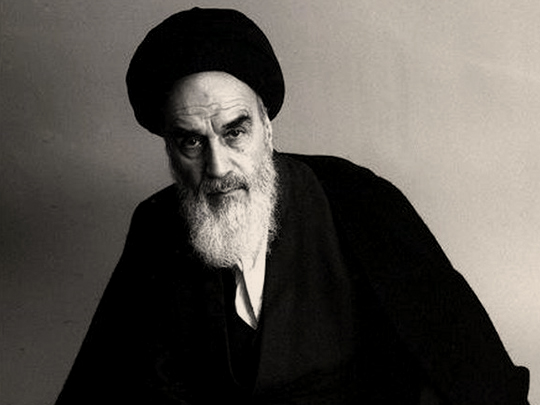Wikimedia Commons / CC-BY-SA-3.0 / GFDL
1 – Over 1 Million Iranians March in Tehran in Support of the Exiled Ayatollah Khomeini
The Iranian Revolution was the overthrow of the Pahlavi dynasty under Mohammad Reza Shah Pahlavi, who was supported by the United States.
It was replaced with an Islamic Republic under the Grand Ayatollah Ruhollah Khomeini.
Khomeini was the leader of the revolution, supported by various Islamist organizations and student movements.
Demonstrations against the Shah commenced in October 1977 and developed into a campaign of civil resistance.
Strikes and demonstrations between August and December 1978, paralyzed the country.
The Shah left Iran for exile on 16 January 1979, as the last Persian monarch, leaving his duties to a regency council and an opposition-based prime minister.
Ayatollah Khomeini was invited back to Iran by the government and returned to Tehran to a greeting by over a million Iranians.
The royal reign collapsed shortly after on February 11, when guerrillas and rebel troops overwhelmed troops loyal to the Shah in armed street fighting, bringing Khomeini to official power.
Iran voted by national referendum to become an Islamic Republic on April 1. Khomeini became Supreme Leader of the country in December 1979.
2 – Margaret Thatcher Becomes First Woman to be elected Prime Minister of the United Kingdom
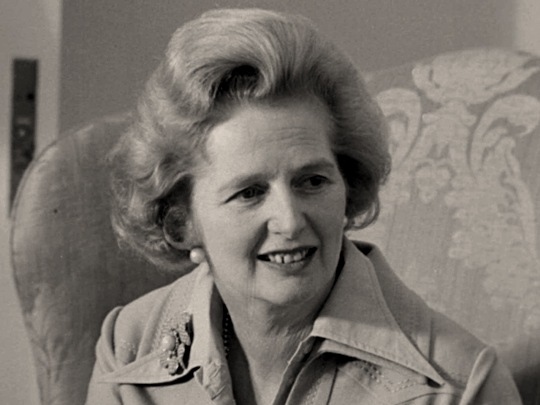
Thatcher was a research chemist before becoming a barrister and was first elected as a Member of Parliament for Finchley in 1959.
Prime Minister Edward Heath appointed her Secretary of State for Education and Science in his 1970 government.
In 1975, Thatcher defeated Heath in the Conservative Party leadership election to become Leader of the Opposition and became the first woman to lead a major political party in the United Kingdom.
She became Prime Minister after winning the 1979 general election on May 4. She went on to be the Prime Minister of the United Kingdom from 1979 to 1990 and the Leader of the Conservative Party from 1975 to 1990.
Thatcher was the longest-serving British prime minister of the 20th century, and the first woman to have held the office. As Prime Minister, she implemented policies that have come to be known as Thatcherism.
3 – Several Million Gallons of Oil spills into Gulf of Mexico & Galveston Bay
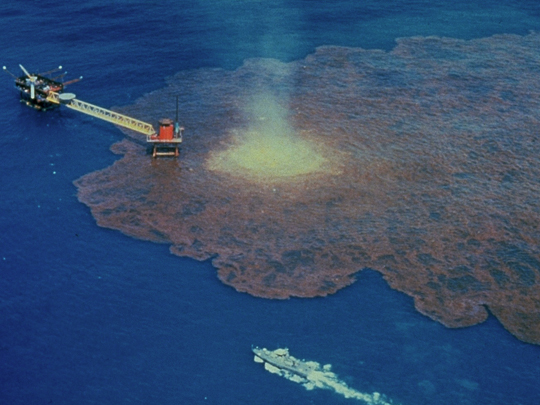
Ixtoc I was an exploratory oil well being drilled by the semi-submersible drilling rig in the Bay of Campeche of the Gulf of Mexico.
On June 3, 1979, the well suffered a blowout resulting in one of the largest oil spills in history, with approximately 3 million barrels of oil spilled.
The oil that was lost during the blow-out polluted a considerable part of the offshore region in the Gulf of Mexico as well as much of the coastal zone
On the morning of November 1, 1979, the Burmah Agate was struck by the outbound freighter Mimosa just outside the entrance to the Galveston Bay Entrance Channel, with 400,000 barrels of fuel onboard.
The impact tore an 8 feet by 15 feet hole, setting off an explosion that ignited the leaking oil. All 26 crew members of the Mimosa survived, but only 4 of the Burmah Agate’s 37 crew survived.
The fire aboard the Burmah Agate burned until January 8, 1980. An estimated 2.6 million US gallons of oil were spilled, with another 7.8 million US gallons consumed by fire. Cleanup operations lasted for a year.
4 – Nicaragua Liberation Day – Sandinistas take over from Somoza
The Nicaraguan Revolution saw the rise of opposition to the Somoza dictatorship in the 1960s and 1970s, leading to a campaign by the Sandinista National Liberation Front to oust the dictatorship in 1979.
In early 1979, the Organization of American States supervised negotiations between the FSLN and the government.
However, these broke down when it was clear that Somoza’s regime would not allow democratic elections.
On July 17, 1979, President Somoza resigned and the FSLN entered Managua, giving full control of the government to the revolutionary movements.
Thus, July 17 became Nicaragua Liberation Day. After the fall of the regime, Nicaragua was largely in ruins.
An estimated 600,000 Nicaraguans were homeless, with another 150,000 either refugees or in exile, out of a total population of just 2.8 million
5 – Louis, Earl Mountbatten Killed by the IRA When his Boat was Blown Up
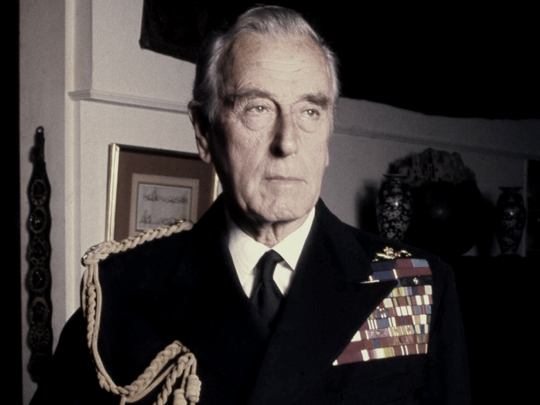
Louis Mountbatten was a British naval officer and statesman, an uncle of Prince Philip, Duke of Edinburgh, and second cousin once removed of Elizabeth II.
On August 27, 1979, Mountbatten was holidaying at his summer home, Classiebawn Castle, in Mullaghmore, in County Sligo, Ireland. The village was only 19 km from the border with Northern Ireland.
Mountbatten went lobster-potting and tuna fishing in his 30-foot wooden boat, Shadow V, which had been moored in the harbor at Mullaghmore.
IRA member Thomas McMahon had slipped onto the boat the night before and attached a radio-controlled bomb.
When Mountbatten was aboard, just a few hundred yards from the shore, the bomb was detonated. The boat was destroyed, and Mountbatten’s legs were almost blown off.
Mountbatten, aged 79, was pulled alive from the water by nearby fishermen but died from his injuries before being brought to shore.
His grandsons, Nicholas, 14, and Paul, 15, were killed by the blast and three others were seriously injured. Lady Brabourne, his daughter’s mother-in-law, died from her injuries the following day.
6 – The Mount Erebus Disaster
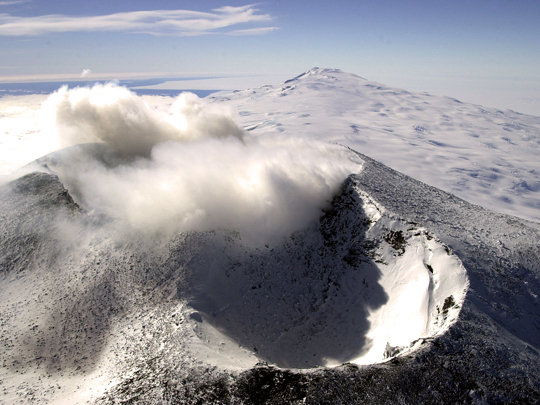
On 28 November 1979, the Mount Erebus Disaster was an Antarctic sightseeing flight that crashed into Mount Erebus on Ross Island, Antarctica, killing all 237 passengers and 20 crew on board.
Air New Zealand Flight 901, which operated between 1977 and 1979, would leave Auckland Airport and fly over the Antarctic continent for a few hours, before returning to Auckland via Christchurch.
On the fourteenth such flight, tragedy struck. The accident is the deadliest accident in the history of Air New Zealand.
The initial investigation concluded the accident was caused by pilot error. However, public outcry led to a Royal Commission of Inquiry being established to look into the crash.
The commission concluded that the accident was caused by a correction made to the coordinates of the flight path the night before the crash.
This, coupled with a failure to inform the flight crew of the change, resulted in the aircraft, being re-routed to a path toward Mount Erebus, instead of being directed by computer down McMurdo Sound.
The report accused Air New Zealand of presenting “an orchestrated litany of lies”, leading to changes in senior management at the airline.
In 2019, on the 40th anniversary of the disaster, New Zealand Prime Minister Jacinda Ardern issued a formal apology to the families of the victims.
7 – President of South Korea, Park Chung-hee, is Assassinated
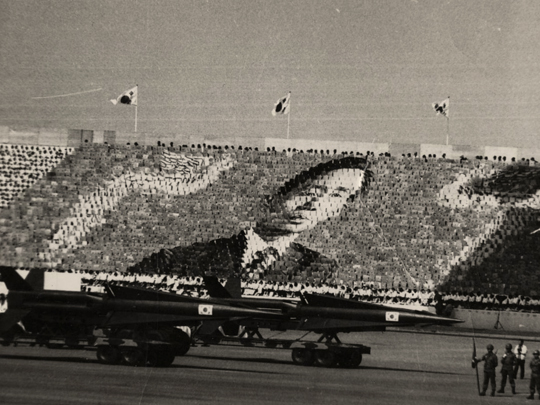
On October 26, 1979, Park Chung-hee, president of South Korea, was assassinated during a dinner at a Korean Central Intelligence Agency (KCIA) safe house.
This was inside the Blue House presidential compound, Gungjeong-dong, Seoul.
He was shot by Kim Jae-Gyu, the director of KCIA and the president’s security chief.
Park was shot in the chest and head and died almost immediately. Four bodyguards and a presidential chauffeur were also killed.
There is still a great deal of controversy on Kim’s motive and whether it was planned or a spur-of-the-moment act.


